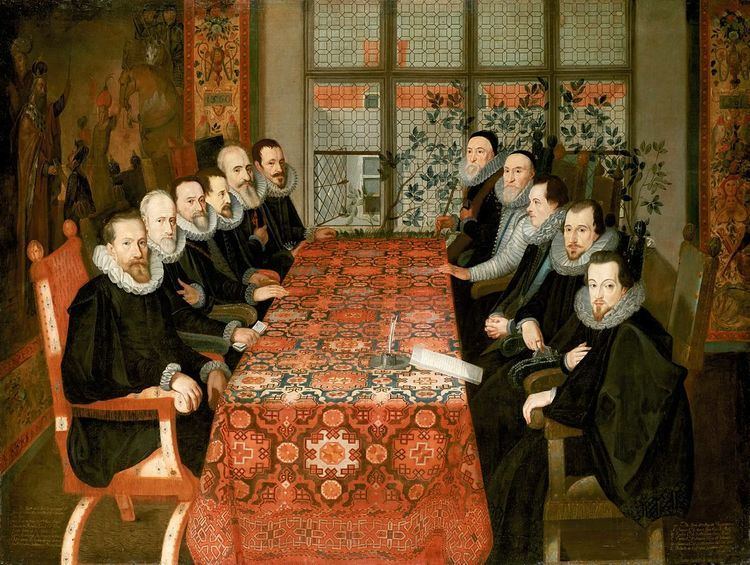 | ||
Signed August 28, 1604 (1604-08-28) | ||
The Treaty of London, signed on 18 August O.S. (28 August N.S.) 1604, concluded the nineteen-year Anglo-Spanish War. The negotiations took place at Somerset House in London and are sometimes known as the Somerset House Conference.
Contents
Background
After the death of Queen Elizabeth in 1603, her successor, James I, quickly sought to end the long and draining conflict. James was an idealistic practitioner of Christian peace and unity and also the son and successor to Mary, Queen of Scots, whose execution had been a proximate cause of the conflict. Philip III of Spain, who also had inherited the war from his predecessor, Philip II, and his treasuries had also been drained and so warmly welcomed the offer and ordered the commencement of the difficult negotiations that followed.
The Anglo-Spanish War had been a complex and fluctuating conflict that also had connections with the Dutch Revolt, the French Wars of Religion, and the Nine Years' War in Ireland. The treaty restored the status quo ante bellum. It amounted to an acknowledgement by Spain that its hopes of restoring Roman Catholicism in England were at an end. Spain was compelled to recognise the Protestant monarchy in England. In return, England ended its financial and military support for the Dutch rebellion, ongoing since the Treaty of Nonsuch (1585).
According to historian Kenneth R. Andrews, while the treaty secured the maritime lanes for the Spanish treasure fleet, English privateering had already devastated the Spanish private merchant marine.
According to Fernando Martínez Laínez, between 1540 and 1650 - the most important period of gold and silver flux between the Spanish America and Spain - just 519 merchant vessels were sunken due to storms and other climatological issues out of 11.000 Spanish ships that made that route, only 107 ships were lost due to Anglo-Dutch piracy which means less than 1%.
According to historian Germán Vázquez Chamorro who played down the English privateering attacks to the Spanish treasure fleet. The most famous pirates lauded by the English literature and propaganda used to attack fishing vessels or boats with small value for the Spanish crown, therefore the Spanish treasure fleet lasted until the decade of 1780, almost around 300 years which the Spanish maritime lines were barely affected
Following the signing of the treaty, England and Spain remained at peace until 1625.
Terms
English delegation
Spanish delegations
The English negotiated with two delegations, one representing the King of Spain, the other the Archdukes Albert and Isabella, rulers of the Spanish Netherlands.
Spanish delegation
Delegation of the Spanish Netherlands
